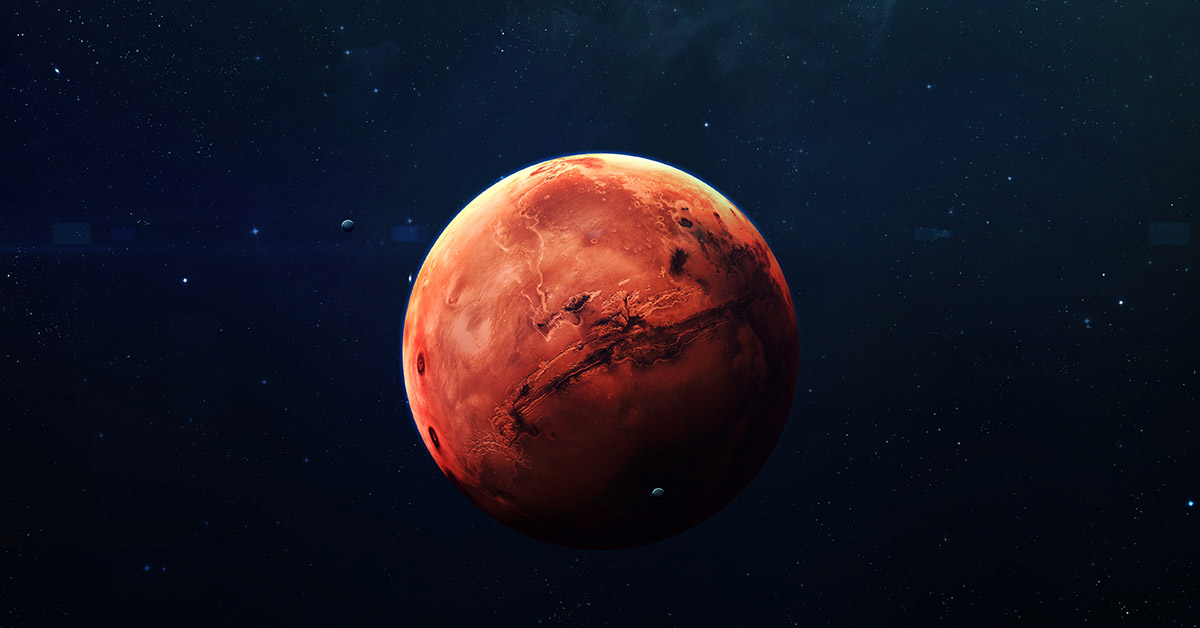Pictures showing what seem to be black spiders scurrying across Mars’ surface have captivated (and properly freaked out) social media. Luckily for us, the European Space Agency (ESA) has come forward and set the record straight regarding the eerie sight, revealing a phenomenon more scientifically intriguing than its first impression suggests.1
Mars’ Phenomena
The ESA tried to quickly squash the idea of extraterrestrial spiders, stating that the images were no more than a strange consequence of carbon dioxide deposits. “In essence, what we are witnessing is not the march of alien spiders but a mesmerizing play of seasonal changes on the Martian terrain,” explained ESA in a statement. “As winter surrenders to spring on Mars, layers of carbon dioxide ice, accumulated during the cold months, undergo a remarkable metamorphosis under the caress of sunlight.”
The transformation is similar to cosmic alchemy: sunlight shines through the icy layers, prompting trapped carbon dioxide to turn into gas, which then exerts pressure that ruptures the overlying ice. The sudden release sends dark dust and gas through cracks in the ice on the surface, resulting in the eerie spider-shaped patterns on Mars’ surface.
This phenomenon isn’t isolated either, it’s also been seen in a specific region known as ‘Inca City,’ nestled in Martian south pole. Named for its resemblance to the famed ruins on Earth, this region has a few forces at play. “Inca City, with its labyrinthine ridgelines and enigmatic formations, serves as a canvas where the geological history of Mars unfolds,” remarked ESA (rather verbosely, if you ask us). “Once believed to be ancient ruins or glacial remnants, this region has revealed its true nature—a testament to the planet’s volcanic past and the enduring forces sculpting its surface”.
Unveiling the Mysteries of Mars’ Inca City
Inca City was initially mistaken for ancient ruins or remnants of Martian glaciers when first discovered. But now the region has emerged as a focal point for unraveling the planet’s geological mysteries.2
ESA’s recent images offer a glimpse into the dynamic processes shaping Mars’ surface. “Inca City, or Angustus Labyrinthus, presents a tantalizing puzzle for planetary scientists,” noted ESA. “The linear ridgelines and circular features evoke visions of an ancient Martian landscape shaped by cataclysmic events and the gradual passage of time”.
Mistakenly thought to be the remnants of ancient glaciers or petrified dunes, Inca City’s true nature was finally revealed by the Mars Orbiter in 2002. The region is now believed to be part of a larger circular feature (about 53 miles wide), which might be an ancient impact crater. The suggestion is that the ridges may have been magma that came up through Mars’ (at the time) fractured crust following the impact.
“What was once perceived as a mysterious ruin or glacial relic has unveiled its true identity,” the ESA announced, “a window into the planet’s volcanic past and the enduring forces that continue to shape its surface”.
Not So Creepy Crawley After All
The ESA’s ongoing exploration of Mars continues to uncover new mysteries and glimpses into its past and present. With innovative technologies and international collaboration, humanity is ready and able to look deeper and closer at our red neighboring planet and maybe even unlock some secrets along the way
From the potential emergence of “Mars spiders” to the geology behind Inca City, Mars has plenty to offer and teach us, even from 140 million miles away. As humanity ventures further into the cosmos, these new revelations and lessons pave the way to better understanding our place in the neighborhood and the universe itself.
Sources
- “Mars Covered In Hundreds Of “Spiders” In Horrifying New Satellite Footage.” Bored Panda. Binitha Jacob. April 26, 2024.
- “Hundreds of black ‘spiders’ spotted in mysterious ‘Inca City’ on Mars in new satellite photos.” Live Science. Stephanie Pappas. April 25, 2024.

